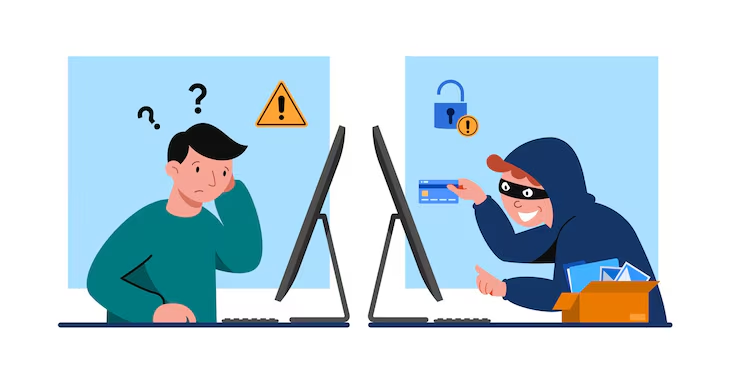A company’s brand is one of its most valuable assets. It represents the sum of customer perceptions, experiences, and trust built over years of hard work. In the digital landscape, this asset is constantly under threat from a wide range of malicious activities. From counterfeit products and phishing scams to social media impersonation and trademark infringement, the potential for damage is immense. Effective brand monitoring is no longer an optional activity for security-conscious organizations; it is a fundamental requirement for survival and growth. Protecting your brand’s integrity requires a proactive and comprehensive strategy to identify and neutralize these threats before they can cause significant harm.
The Scope of Modern Brand Threats
To effectively protect a brand, one must first recognize the diverse nature of the threats it faces. These are not isolated incidents but part of a complex ecosystem of digital risk. Malicious actors exploit brand recognition to deceive customers, steal sensitive data, and profit from illegal activities. A comprehensive defense strategy must account for the full spectrum of potential attacks.
The most common threat is website impersonation, where criminals create fraudulent sites that mimic legitimate businesses. These fake online stores or login portals are designed to trick customers into providing payment information or personal credentials.
According to Netcraft’s research, a single fraudster can establish hundreds of these fraudulent sites globally, often targeting brands with strong consumer recognition.
These sites may look identical to the real thing, making them difficult for the average consumer to identify as fake.
Social media impersonation is another prevalent issue. Fake accounts are created on platforms like Facebook, Instagram, and X (formerly Twitter) to spread misinformation, run scams, or post damaging content while posing as the official brand or its executives. This can confuse customers, damage the brand’s public image, and undermine marketing efforts. Similarly, unauthorized mobile apps appearing in official app stores can contain malware or serve as another vector for phishing, putting customer data at risk. These threats are dynamic, and new methods of attack emerge continuously, making manual monitoring nearly impossible.
Core Components of an Effective Monitoring Strategy
A robust brand protection strategy is built on a foundation of continuous and automated monitoring. The goal is to gain complete visibility into how a brand is being represented across the entire digital landscape. This process involves several key components working in concert to provide a proactive defense.

The first step is comprehensive detection. This requires scanning billions of data points across the internet, including domain registrations, social media mentions, mobile app stores, and marketplaces. Advanced systems use a combination of AI, machine learning, and rule-based analysis to identify potential infringements with high accuracy. This helps to filter out the noise and pinpoint genuine threats, from typosquatting domains (domains with slight misspellings of a brand name) to unauthorized use of logos and marketing materials. An effective brand protection software solution will ingest data from proprietary feeds and public sources to ensure the widest possible coverage.
Once a threat is identified, the next critical component is analysis and prioritization. Not all threats carry the same level of risk. A system must be able to evaluate the severity of an infringement based on factors like website traffic, the type of attack (e.g., phishing vs. simple copyright misuse), and its potential impact on revenue and reputation. This allows security teams to focus their resources on the most critical issues first. For example, a phishing site actively harvesting customer credentials requires more immediate attention than a blog post using a copyrighted image without permission.
The Role of Technology and Automation
Given the sheer volume and velocity of digital threats, manual monitoring is no longer a viable option for any sizable brand. Technology, specifically automation, is the cornerstone of modern brand protection. Automated systems can perform tasks at a scale and speed that is impossible for human teams to replicate, ensuring that threats are detected and addressed in near real-time.
A sophisticated brand protection software platform automates the entire lifecycle of threat management, from detection to resolution. These platforms are designed to:
- Scan Continuously: Monitor the web 24/7 for new instances of brand misuse, including newly registered domains, social media profiles, and marketplace listings that may indicate fraudulent activity.
- Analyze at Scale: Use AI and machine learning algorithms to analyze vast datasets and identify patterns that signal a coordinated attack, even across different threat vectors. This allows for the identification of not just individual fake sites, but the entire network infrastructure behind a fraudulent operation.
- Initiate Takedowns Automatically: Once a high-priority threat is confirmed, the system can automatically generate and send takedown requests to the relevant parties, such as hosting providers or domain registrars, dramatically reducing the time to remediation.
- Provide Actionable Intelligence: Consolidate data into intuitive dashboards and reports that give stakeholders a clear overview of the threat landscape. This intelligence helps teams understand prevailing risks, measure the effectiveness of their strategy, and make informed decisions about future investments.
Last Words
By implementing a comprehensive strategy that combines advanced detection technologies, intelligent analysis, and rapid enforcement, businesses can safeguard their identity and maintain the trust they have built with their customers. Investing in a powerful brand protection software is not merely a cost center; it is a strategic investment in the long-term health and resilience of the brand. This allows organizations to minimize revenue loss, protect their intellectual property, and ensure that their customers have a safe and secure experience, ultimately preserving the value of their most important asset.

